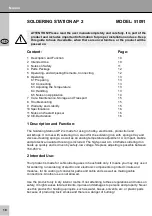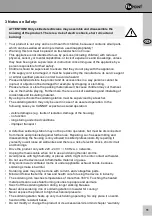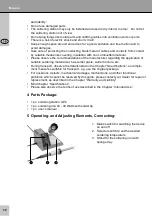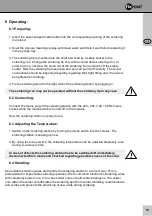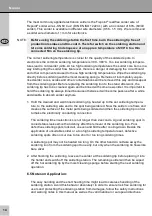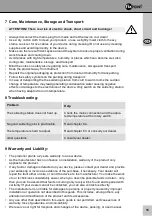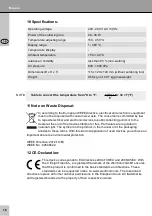
13
6 Operating:
6.1 Preparing:
1. Insert the spiral-shaped metal holder into the corresponding opening of the soldering
iron stand.
2. Soak the viscose cleaning sponge with clean water and drain it well before replacing it
in the sponge tray.
3. The soldering tip is mounted into the shaft and fixed by a safety socket to the
soldering iron. Change the soldering tip only at the cooled down soldering iron. In
order to do so, unscrew the union nut at the soldering iron and push off the safety
socket. Now the soldering tip is exposed and you can pull it off carefully. The screw
connections should be inspected regularly regarding their tight fitting and, if required,
be tightened accordingly.
4. Fix the soldering stand to the right side of the soldering station by plugging in.
The soldering iron may not be operated without the soldering tip in any case.
6.2 Connecting:
Connect the mains plug of the soldering station with the 220 - 240 V AC / 50 Hz mains
socket, while the mains switch is turned off to the 0-status.
Now the soldering station is ready to use.
6.3 Adjusting the Temperature:
1. Switch on the soldering station by turning the mains switch into the I-status. The
soldering station is heating up now.
2. By using the rotary switch, the soldering temperature can be adjusted steplessly, also
during use at every time.
In case of defects the soldering station has to be switched off immediately,
disconnected from mains and checked regarding possible causes of the error.
6.4 Handling:
Use suitable soldering wires and handle the soldering station in a correct way. This is
prerequisite for impeccable soldering operation. We recommend electronics soldering wires
with colophony solder core. In no case solder cores should contain halogens. The solder
core within the solder wire liberates the soldering spot from solder-inhibiting contaminations
and oxides and prevents the producing of new oxide during soldering.
Summary of Contents for AP 2
Page 9: ...17 ...


